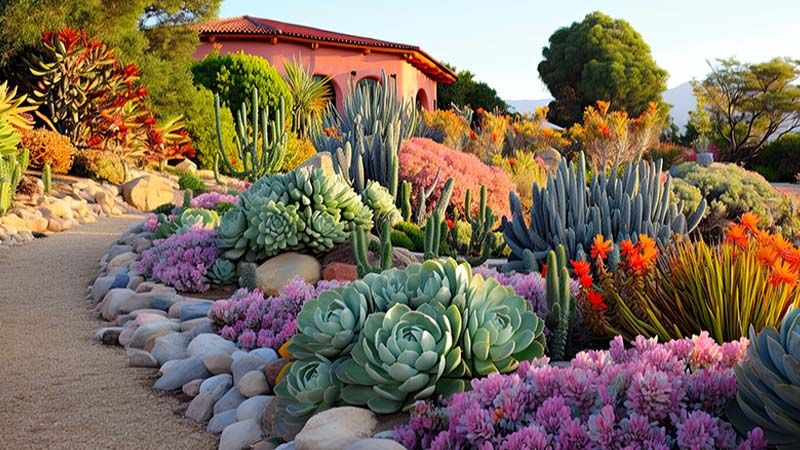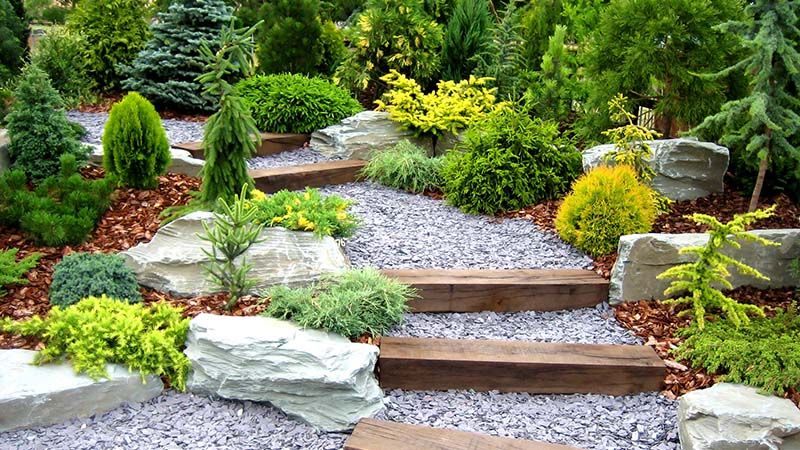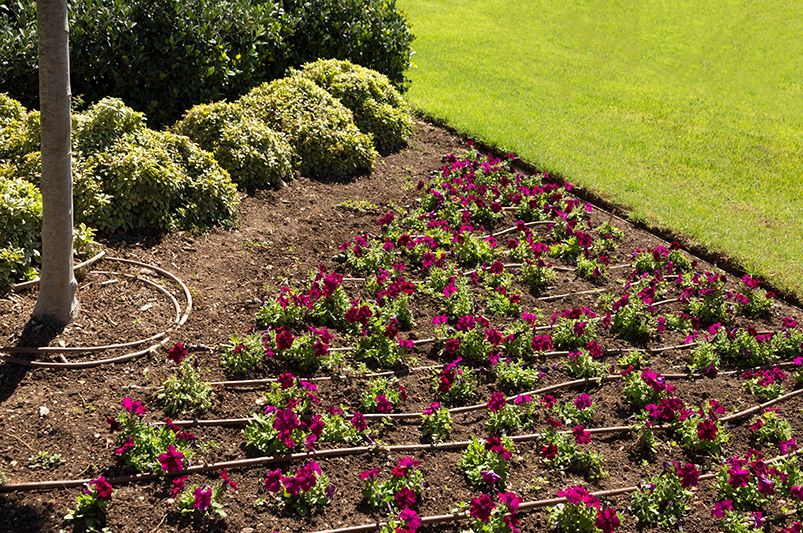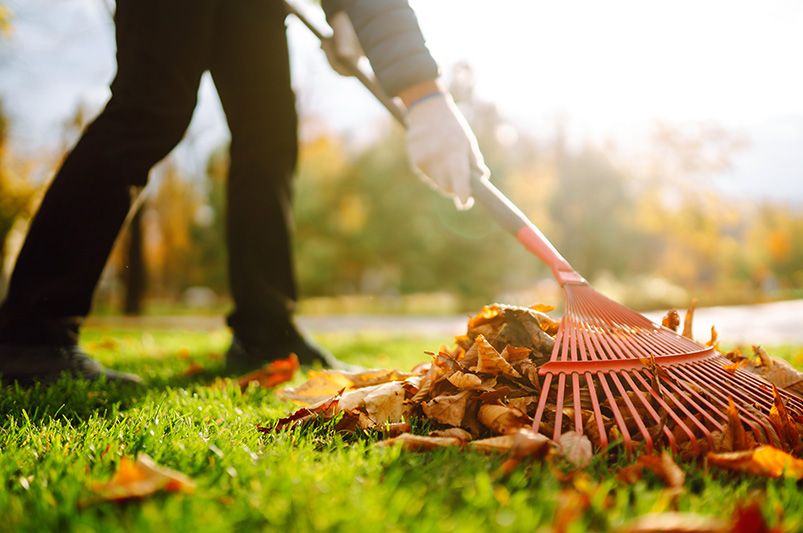
Low Maintenance Landscaping: Easy and Beautiful Solutions
Published: 16/09/2024 | Updated: 15/09/2024
Key Highlights
- Discover landscaping solutions requiring minimal effort for a stunning yard.
- Explore drought-tolerant plants, native species, and hardscaping options to reduce maintenance.
- Learn how to simplify watering with smart systems and efficient irrigation.
- Find out creative design techniques like grouping plants with similar needs for easier care.
- Get seasonal care tips like winter preparation and clean-up strategies to minimize work.
Introduction
Improving your home’s curb appeal with a lovely landscape doesn’t need to take hours of hard work. By making smart landscape design choices, you can have a beautiful outdoor space that needs less maintenance. This blog will share helpful and creative ideas for making the low-maintenance landscape you have always wanted.


Top Easy and Beautiful Low Maintenance Landscaping Solutions
To create a low-maintenance yard, you need to choose the right plants and materials. Native plants are strong and fit well with local weather. They need less water, fertilizer, and pest control than other types of plants.
Also, using sturdy items like hardscaping, mulch, and ground cover can really cut down on the work you need to do. Let’s look at some great ideas to turn your outdoor space into a beautiful and calm place with minimal effort.
1. Opting for Drought-Tolerant Gardens for Sustainability
Creating a garden that needs less water is a smart choice for homeowners. This helps save water and lowers maintenance, which is great in places with little rain or a lot of sun. Tolerant plants can survive in dry conditions. Once they are settled, they need less water.
When picking plants for your drought-tolerant garden, choose those that grow well in full sun and need well-drained soil. Good options include succulents, lavender, Russian sage, and yarrow. These plants have bright colors, interesting textures, and can handle long dry times.
Be sure to group plants with the same watering needs together. This way, they get the right amount of water. Adding a layer of mulch around your plants keeps the soil moist, which helps cut down on water usage and care.
2. Incorporating Native Plants for Easier Care and Local Wildlife Support
One easy way to create a low-maintenance landscape is by using native plants. These plants have grown in their area for a long time. They are good at handling local weather, soil, and rain.
Picking native plants can help you need less water, fertilizer, and bug control. They also provide food and homes for local animals. This helps your backyard support a healthy ecosystem.
You can find many types of native plants. This includes bright wildflowers, flowing grasses, strong shrubs, and tall trees. There are choices for every style and garden layout.
3. Installing Artificial Grass to Reduce Watering and Mowing
If you want a neat lawn without the hassle of mowing, watering, and fertilizing, artificial grass is a great option. You don't have to deal with patchy spots or uneven growth anymore. No more hearing the loud lawn mower every weekend – artificial turf is a low-maintenance choice that keeps your yard looking good all year.
Today's artificial grass looks much better than before. It has realistic textures, colors, and strength, making it similar to natural grass. This makes it perfect for busy places, kids’ play areas, or for anyone wanting to help the environment.
Even though buying artificial grass costs money at first, it can save you time, cash, and effort over time. This lets you enjoy a green lawn with very little work needed.

4. Using Mulch to Suppress Weeds and Retain Soil Moisture
One simple and effective way to make gardening easy is to put a thick layer of mulch around your plants and garden beds. Mulch serves as a shield between the soil and the weather. It stops weeds by blocking sunlight and stopping seeds from sprouting.
Besides stopping weeds, mulch also helps keep the soil temperature steady. It keeps plant roots cool in hot summer days and protects them from frost in the cold months. Also, mulch acts like a sponge. It soaks up rain and watering, then releases that water slowly into the soil. This helps the soil hold water better and means you don't have to water as often.
You can choose from different types of mulch. Each type has its own benefits and looks good in your garden. Organic mulches like bark chips, shredded leaves, and compost break down over time, making the soil richer as they decay.
5. Choosing Perennials Over Annuals for Longevity
When you choose plants for your garden, think about how long they live and how much care they need. Bright annuals bring color for one season, but you have to replant them every year. This takes more time and effort.
In contrast, perennials come back every year. Once they are planted well, they return stronger each spring. In winter, they die back to the soil, but as the weather warms up, new growth appears from their roots.
You can find many types of perennials, like beautiful lilies, happy coneflowers, strong hostas, and elegant ferns. These plants can grow well in different climates and soil types. By choosing these long-lasting plants, you can create a beautiful and changing garden with minimal effort.

6. Implementing a Rock Garden for Minimal Upkeep
Rock gardens are a great and easy way to improve your landscape design. They give a unique look and can make your yard feel wilder. These gardens are perfect for dry areas and need very little water and care once they are set up.
It’s best to pick a sunny spot with good drainage for your rock garden. Use rocks of different sizes, shapes, and colors to make it look nice. Choose drought-tolerant plants, like succulents, sedums, and ornamental grasses, that grow well in dry and rocky soil.
Once the plants are settled in, rock gardens only need water occasionally. This makes them a wonderful option for people who want a yard that doesn't take a lot of work and uses less water. Adding a little slow-release fertilizer in the spring can keep the plants healthy.
7. Adding Hardscaping Features for Less Lawn Maintenance
Incorporating hardscaping into your landscape design is a great way to cut down on lawn care. It can also make your outdoor living space look nicer and more useful. Hardscaping includes things like patios, walkways, retaining walls, and fire pits. These non-living elements add shape and style to your yard.
When you swap out parts of your lawn for hardscaping, you can lower how much you need to mow, water, and fertilize. Patios and walkways give you set places for fun, eating, or just relaxing outside. This also helps to protect your lawn from damage.
Hardscaping helps manage slopes and bumpy ground. It stops soil from washing away and makes your yard more usable. When you choose hardscaping materials, think about how they match your house and the area around it. This way, you can make a nice and attractive design.

8. Selecting Low Maintenance Shrubs and Trees for Structure
Trees and shrubs are important parts of a good landscape. They add height, provide shade, and create privacy. However, some trees and shrubs need more care than others.
Many easy-care types need little trimming, shaping, or bug control. Evergreen shrubs, such as boxwoods, hollies, and yews, keep color and shape all year with little effort.
When choosing trees for your yard, think about how big they will get when they grow. Smaller trees usually need less pruning and care. It is also good to consider their ability to resist diseases, survive in dry conditions, and how much fallen leaves they create.
9. Creating Outdoor Living Spaces with Durable Materials
Extending your living space to the outdoors is a great way to enjoy nature. It creates cozy spots for relaxing, dining, and entertaining. When you design outdoor spaces, pick furniture and materials that resist the weather and need little maintenance. This helps you spend more time enjoying your outdoor retreat.
Consider using strong materials like weather-resistant wicker, teak, or recycled plastic for your outdoor furniture. These materials won’t fade, crack, or get damaged by moisture. This means they will stay beautiful for a long time.
Choose fade-resistant fabrics for your cushions and pillows. You can also use waterproof covers that are easy to take off and clean. By using these strong and low-maintenance materials, your outdoor living areas will stay beautiful and welcoming with little effort.
10. Utilizing Ground Covers to Reduce Bare Spots
Bare spots in your yard can look bad and allow weeds to grow. Ground cover plants are a good choice to fill these empty areas. They help stop weed growth and make caring for your yard easier.
You can find many types of ground cover plants that do well in different light levels and soil types. Some enjoy full sun, like sedums and creeping thyme. Others, like hostas and ferns, grow well in the shade. Ground covers grow low and wide, creating a thick mat that keeps weeds from growing and makes your yard look nice with their leaves and flowers.
When picking ground covers, think about how they grow, how tall they get, and how much light they need. This will help you choose the right plants for the area. Prepare your soil well, and remember to water regularly when they are getting established. This will help your ground cover flourish.

11. Designing with Gravel Paths for Easy Navigation
Gravel paths bring a nice, rustic feel to landscape design and work well in outdoor space. They wind through gardens and help guide you in your yard. Gravel paths are cheaper and easier to take care of than paved paths.
Making a gravel path is not hard. You just need some basic tools and materials. After you set it up, gravel paths don’t need much care. This makes them perfect for people who want an easy landscaping choice.
You might need to do some weeding now and then. It's also important to rake or add more gravel once in a while. This keeps the surface smooth and stops weeds from popping up.
12. Embracing Container Gardening for Flexibility
Container gardens give you great flexibility and are easy to move. You can change any outdoor space into a lively area. It doesn’t matter if you have a big balcony, a small patio, or a sunny windowsill. With container gardening, you can enjoy gardening with less work.
One key benefit of container gardening is that you can create the best conditions for your plants. For example, it’s easy to use soil that drains well for succulents and herbs. You can also add compost to the soil for plants that need more moisture.
Additionally, container gardens allow you to move your plants around whenever you want. This creates interesting displays during the growing season.

Simplifying Watering with Smart Systems
Efficient watering is very important for a healthy landscape. This is true even for drought-tolerant plants. Using smart watering systems can help make it easier. These systems save water and help your plants get the right amount of moisture. This way, you won’t waste any precious water.
There are many creative solutions to improve your watering routine. For example, drip irrigation systems send water straight to the roots of your plants. Rain barrels can collect rainwater for later use. These ideas can help you create a better and more sustainable landscape.
13. Installing Drip Irrigation Systems for Efficient Water Use
Drip irrigation systems are a smart way to water plants. They give water straight to the roots and waste less water. This helps plants grow healthier.
Unlike regular sprinklers that spread water everywhere, drip irrigation gives water slowly, drop by drop, using tubes or hoses. This way, water goes right to the roots where it’s most needed. It also helps reduce evaporation and runoff.
Keeping the leaves dry lowers the chance of fungal diseases. Setting up a drip irrigation system might sound hard at first. However, it's pretty easy, especially for smaller gardens.
14. Using Rain Barrels for Natural Water Collection
Collecting rainwater in barrels is a smart and green way to depend less on city water. It helps give your plants fresh, chemical-free water. Rain barrels gather rain that falls from rooftops. Instead of it going down the drain, you can use it for your garden.
Rainwater is soft and does not have chlorine or other chemicals found in tap water. This makes it great for watering plants, especially those that can be harmed by such additives.
It's easy to set up a rain barrel under a downspout. Most barrels have a spout that makes it simple to get the collected water. You can use a watering can or connect a hose to the spout to water your plants whenever you need to.
Low Maintenance Design Techniques
Designing a landscape that is easy to maintain involves more than just picking plants. Smart design choices and some handy techniques can help you make an outdoor space that looks great and doesn't need a lot of care.
We will look at how planning your landscape with maintenance in focus can help. Grouping plants that have similar needs is one idea to consider. These solid design tips can help make your gardening tasks easier while creating a lovely outdoor haven that is simple to care for.
15. Planning Your Landscape with Maintenance in Mind
Before embarking on any landscape design project, taking the time to plan with maintenance in mind can save you countless hours of work and frustration down the road. Consider factors such as your available time for gardening, the level of effort you're willing to invest, and the specific needs of your chosen plants.
Creating a rough sketch or using online landscape design tools can help you visualize different layouts and plant combinations. This allows you to identify potential maintenance challenges before planting, ensuring your landscape remains manageable and enjoyable for years to come.
|
Factor |
Considerations |
|
Available Time |
How much time can you realistically dedicate to gardening each week? |
|
Effort Level |
Are you comfortable with occasional maintenance or prefer minimal upkeep? |
|
Plant Needs |
Do your chosen plants have specific watering, sunlight, or pruning requirements? |
|
Accessibility |
Can you easily access all areas of your landscape for maintenance tasks? |
16. Grouping Plants with Similar Needs Together
One good way to save time and effort in gardening is to group plants that have similar needs. When you plant plants with the same light, soil, and watering needs close together, it makes caring for them easier.
For example, if you plant sun-loving, drought-tolerant plants in one area, you do not have to water them as often as plants that need more moisture. Also, when you group plants that require the same nutrients, you only need to apply fertilizer once for the whole group.
By organizing plants based on their needs, you can make your gardening routine faster and easier.
Seasonal Care Tips for Low Maintenance Landscaping
Low-maintenance landscaping does not mean you ignore your garden. Taking care of it during different seasons is important. This keeps your outdoor space healthy and lively. It also helps you avoid a lot of work all year long.
Get your garden ready for winter. Use seasonal clean-up methods. Let’s explore some easy tips to make gardening simple for every season.

17. Preparing Your Garden for Winter to Minimize Spring Work
Preparing your garden for winter is a good way to reduce work in spring. Taking a little time before the frost helps keep your plants safe from bad weather. This way, they will be ready to grow when it gets warmer.
Start by cutting back any dead or sick stems and leaves from your perennials. Remove these from the garden to stop pests and diseases from staying over winter. Add a layer of mulch around delicate shrubs and trees. This will help protect their roots from freezing.
Make sure to disconnect and drain your garden hoses to avoid cracking. Store outdoor cushions, pillows, and other items in a dry place. By doing these easy steps, you will have less work to do in your garden come spring.
18. Implementing Seasonal Clean-Up Strategies
Doing seasonal clean-up tasks all year can save you a lot of time and effort later. By working on small jobs regularly, you can stop them from turning into big, hard chores.
In spring, take away any mess that built up during the winter. This includes leaves, twigs, and branches. You can also divide plants that have grown too much and either replant them or share them with friends.
In summer, keep cutting off dead flowers. This helps your plants bloom longer and stops them from spreading too much.
Fall is the best time to rake or mulch the leaves. Clean out the gutters and remove any plants that have finished growing. These easy seasonal clean-up tasks help keep your garden neat and healthy all year round.
Conclusion
In summary, low maintenance landscaping has many benefits. It is sustainable and easy to care for. You can use drought-tolerant gardens, native plants, and artificial grass to design a nice outdoor space with minimal effort. Smart systems, like drip irrigation and rain barrels, make watering easier and better for the environment. If you plan your landscape with care and follow seasonal tips, you will keep it beautiful without much trouble. Use low maintenance design ideas to turn your outdoor space into a lovely area in nature. Share these tips on social media to encourage others to create their own easy-care landscapes.
Frequently Asked Questions
What Are the Best Low Maintenance Plants for My Climate?
The best plants that need little care are ones that grow naturally in your area. Check the USDA Hardiness Zone Map to find your zone. You can also talk to your local nursery about native plants or types that do well where you live.
How Often Should I Update Mulch for Optimal Benefits?
For the best results, change your organic mulches, like bark or wood chips, every year or every other year. This depends on how fast they break down. If you have a thick layer and it breaks down slowly, you won't need to update it as often.
Can Low Maintenance Landscaping Increase Home Value?
A nice and well-cared-for outdoor space improves your home's curb appeal. This attracts possible buyers and can even increase your home's value.
Tips for Transitioning to a Low Maintenance Garden?
Start small by changing a part of your garden bed or lawn. Early spring is a great time for this. It helps new plants take root during the growing season.
Looking to design a low-maintenance yard that enhances your home?
If you’re not sure where to start with your low-maintenance landscaping project, enlisting a professional can make a significant difference—and it doesn’t have to be costly. ShrubHub, a pioneer in remote landscape design, provides top-notch 3D landscape designs at budget-friendly rates. Our skilled team will walk you through every step, ensuring your outdoor space is both beautiful and tailored to your needs. Let ShrubHub transform your yard into a stunning, easy-to-maintain retreat!


